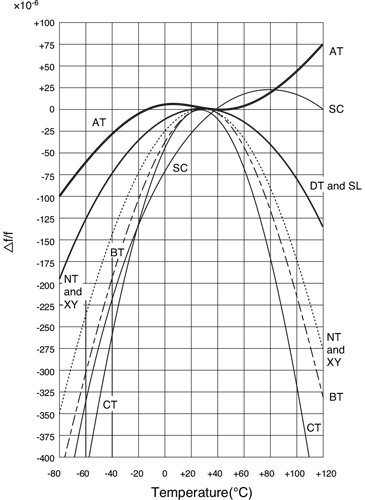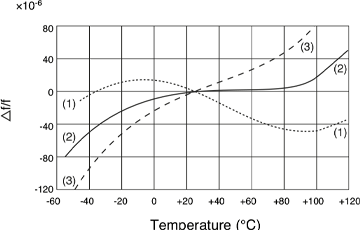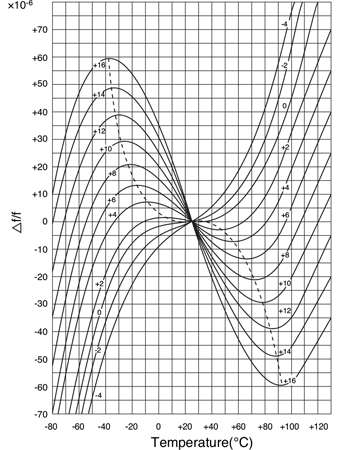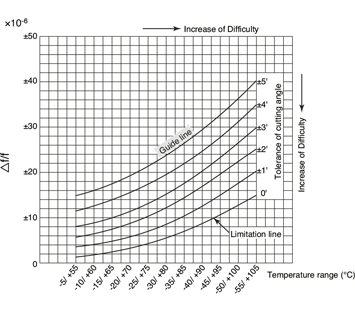Summary
Cutting Angles and Frequency temperature characteristics
Crystal units are widely used because their oscillation frequency is very stable, and good frequency temperature characteristics are required.
However, as general materials, crystal elements cut out for a crystal unit is affected by the temperature change, and the oscillation frequency changes.
The degree of change in the oscillation frequency (frequency / temperature characteristics) depends on the cutting orientation.
Fig. 3 shows typical frequency / temperature characteristics for each cutting orientation.
Fig. 4 shows how to obtain crystal units with good temperature characteristics, and explains the AT-cut which is a typical crystal plate.
Fig. 4 shows three different temperature characteristics for different cutting angles.
As is clear from the figure, the curve in (2) shows a small change in frequency with respect to temperature change near room temperatures. For example, it provides excellent characteristics for applications in a range of -10 to +60 ° C.
On the other hand, when used over a wider temperature range of -55 to +105 ° C, for example, it is better to use the characteristic in (1) to keep good frequency changes.
Therefore, the most appropriate temperature characteristics must be determined from the viewpoint of manufacturing and economical efficiency for the intended use and operating temperature range.
Fig. 5 shows the frequency / temperature characteristics when the cutting angles of AT-cut is changed by 2 minutes.
The allowable width of cutting angles is determined by the allowable variation width of the frequency in the operating temperature range of the crystal unit and its temperature range.
Fig. 6 shows the allowable width of cutting angles (difficulty in realizing) for the frequency / temperature characteristic standard.
This figure shows there are manufacturing difficulties (cost) and areas that cannot be realized.
|




